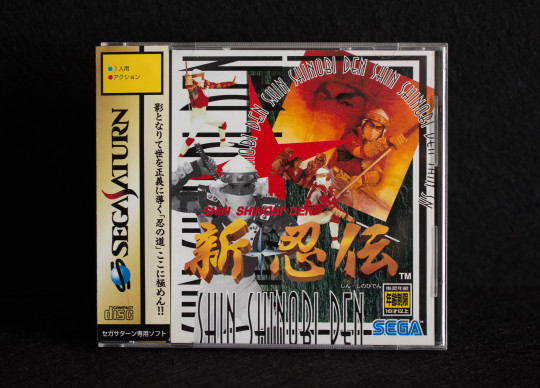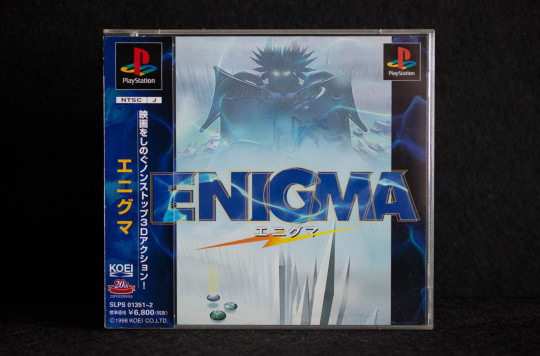#Ikari no Yōsai
Explore tagged Tumblr posts
Text
Last year in classic games

For motives I cannot expand on with much glee, I found a little more time than usual this year to reduce my seemingly endless backlog of classics. Despite all the fine new releases 2023 has greeted us with, I was able to finally dive into this eclectic handful of games I gathered over time. It is perhaps no coincidence that I reached out for more direct game experiences than story-driven ones. I find myself increasingly drawn to games designs that are mindful of the player's time as a commodity not to be carelessly squandered.
One note, if I may: I would like to inspire my readers to progressively discard the use of the word retro this year. We are all of advancing years and wisdom, I trust. The introduction of the term retro to the videogame vernacular was a gross mistake furthering the abhorrent notion that games were as ephemeral in their nature as fashion. It is a purely commercial designation by which to profitably repackage old software as a category of its own, originating from the same minds that considered games as mere novelty trinkets of limited marketable lifespan.
It is up to the player to individually decide on an older game's appeal, whether they may be discovering it for the first time or revisiting it for the umpteenth one. This is not only an appeal for those of you who write about games in any capacity, rather to anyone who takes videogames as a serious interest and communicates with others about this the object of their predilection. Thank you.

This loose cart came with a Famicom bundle auction I won in 2009, if memory serves. I turned on the Famicom and tested it merely to verify if it was still in working condition and found myself engrossed in that trademark Pajitnov/Pokhilko elegant approach to game design. As per the cassette's label, Hatris was originally a concept developed in collaboration with ParaGraph, a Russian studio that went on to develop specialized professional software, a year before the Bullet-Proof Software licensing deal. They produced a few games in the turn of the decade that were rather unusual and, some would say, even visionary. I recommend that you look up their story, if you're curious.

The only entry from the group that isn't of Japanese provenance - though it is a Japanese edition - I played it for purely nostalgic motives, perhaps a yearning for a certain pixel, palette and parallax that resoundingly evoke a time I was fortunate enough to experience, first-hand. If I may be honest, I purchased the game for the visual value of its unique cover art, which I deem superior to the US edition's. In saying that, I must highlight that the original Amiga game box art was quite accomplished.

In the Summer of 93 while on holiday at the beach, there was a French Nintendo magazine for sale whose purchase I could not resist. It was very common to find Spanish, English and French publications at the time in Portugal. This edition had a striking four page preview of this Jaleco gem, Ikari no Yōsai, or Operation Logic Bomb as it was named in the West. For years I searched the PAL version in vain, then ultimately decided to import it on account of - you'd never guess! - the superior box art. Playing it this year at long last, I was instantly reminded of an old Game Boy favourite, Fortified Zone, which I now know to be its prequel. Most top-down shooters are best played in co-op. Ikari no Yōsai is strictly and single-player affair and not once did I miss the absence of a friendly companion.

Keio Flying Squadron 2 first came to my attention via an infamous Saturn demo disc, which came into my hands through circumstances I have since forgotten about. I use the word infamous because the entire game code was available in the disc and the level select cheat code enabled me to unscrupulously play the entirety of the game for no additional expense - at only the cost of missing out on the colourful Studio Pierrot anime FMV interludes.
Having played the sequel first, I was somewhat disenchanted to learn the original game did not feature any platforming segments, it being a pure scrolling shooter in the same whimsical vein as Parodius or, say, an AirZonk. Still, a jolly good time with the old three buttons.

For reasons that will not be immediately apparent to younger reading audiences, I pride myself in having completed most Shinobi games, The Revenge Of and GG being my preferred ones. Shin Shinobi Den, or Shinobi X in Europe, was a game not readily available from my usual game dealers. I eventually borrowed the PAL version once, though not nearly long enough to master it. I finally saw it through this year, mere days before SEGA announced a new episode. While the live action clips looked a tad maladroit in the 1990s, they came to acquire that nice patina I now look for in classic games.

Omega Force was known to take the sporadic breather from producing some of KOEI's most cherished and profitable series. I distinctly remember enjoying Destrega quite a bit in its day, a game quite unlike any other. What their 1998 Enigma lacks in consistency and originality, it more than amply makes up for with its own bizarre concepts, extravagant characters and unexpected genre fusions. Of all the titles in this post, this was the one whose pace felt the most sluggish, and needlessly so.

Microsoft Game Studio Japan release schedule plans were not at all kind on this, their first production, Magatama. Earlier this year I praised this era for its highly inspired H&S action adventure titles and even spent a few days delighting myself with the likes of Blood Will Tell, Nightshade, Bujingai, or Chaos Legion. This most unusual creation, developed by the aptly-named Team Breakout - a group composed of many talented ex-Square employees - is one among the finest of the era. Sadly, it did not do enough to persuade players at the time that it was a better purchase than Otogi or its sequel. Playing it with my mind and heart set back in time to 2003, I can say that this misguided consideration may not have withstood a second thought.

I've long wanted to write an extensive article on Japanese firefighting games. In fact, I have the structure laid out for a Japanofiles entry gathering moss in my Tumblr drafts for over a decade now. For a brief period this year I convinced myself I could finally fulfil this aspiration and resumed Sakurazaka Shouboutai as research. Developed by Racdym - later Racjin - for Irem, it is every bit as good as Firefighter F.D.18 or Hard Luck, and in many ways more inventive from a conceptual standpoint. While Konami and Spike found a way to have their games released in the west, Sakurazaka's poor regional sales performance clearly accounts for Irem's reluctance to bear the cost of an overseas ticket.
#hatris#paragraph#bullet-proof software#wolfchild#mega cd#Ikari no Yōsai#operation logic bomb#fortified zone#jaleco#super nintendo#keio flying squadron#victor entertainment#shin shinobi den#shinobi x#shinobi legions#sega saturn#enigma#omega force#koei#magatama#xbox#Sakurazaka Shouboutai#irem#racjin#racdym
32 notes
·
View notes


